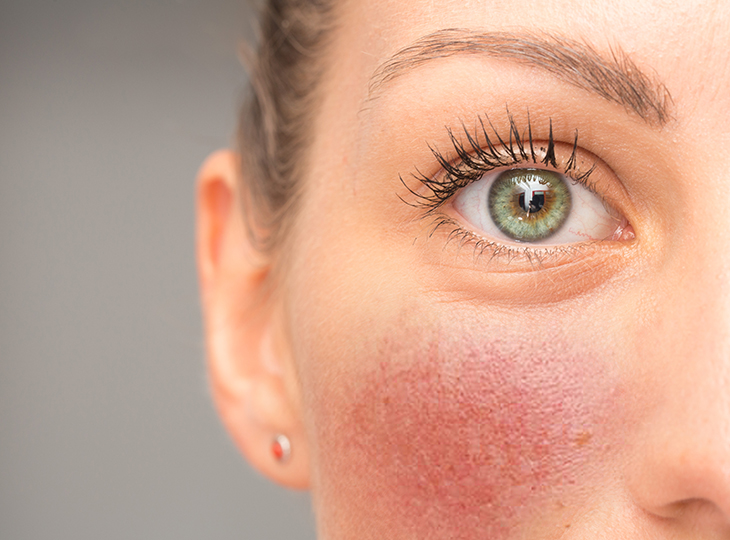Tues: 8:30am - 3:00pm
Wed: 12:00pm - 6:00pm
Thurs: 8:30am - 3:00pm
Fri: Closed
Sat: 8:30am - 12:30pm
Sun: Closed
Greenvale, NY 11548
Rosacea Awareness Month Puts Focus on Chronic Skin Condition


April was Rosacea Awareness Month, an annual campaign to raise awareness and support for those living with rosacea.
Rosacea is a chronic skin condition that causes redness, pimples, and other skin issues. It usually affects the face and is more common in adults aged 30 to 60. Rosacea can be painful. Symptoms may include burning, stinging, or aching sensations. It can also cause a feeling of dryness, tightness, or tenderness. While there is no cure for rosacea, treatments can help minimize symptoms.
The exact cause of rosacea is unknown, but research suggests it may be due to a combination of genetic and environmental factors. Abnormalities in blood vessels, an immune system response, and the presence of certain bacteria on the skin may also contribute to its development.
Treatment for rosacea will vary depending on the individual, but may include topical medications, oral medications, laser treatments, or intense pulsed light therapy. Your dermatology provider will be able to provide you with the best treatment plan for your specific case.
A dermatologist typically diagnoses rosacea by examining your skin and discussing symptoms and medical history. The dermatologist may also ask about any recent changes in your lifestyle or environment that could be contributing to the symptoms. To treat rosacea effectively, it’s important for your dermatologist to rule out other skin conditions that may have similar symptoms, such as eczema or psoriasis. In rare cases a skin biopsy may be necessary to confirm the diagnosis. This is done in the office during your visit and is virtually painless.
How we treat rosacea
At Walk-in Dermatology, we may prescribe oral and topical antibiotics to manage rosacea. Because the presentation, severity, and triggers for rosacea vary among patients, we will tailor your treatment regimen to your individual needs. Oral antibiotics in pill form may be used along with a topical regimen as the first course of treatment to bring the rosacea under control and minimize flares.
Long-term use of oral antibiotics can cause side effects, including nausea and gastrointestinal problems, therefore the goal of treatment is to find a topical regimen of medications applied directly to the affected areas on your skin to keep symptoms under control. Identifying and minimizing exposure to your personal triggers is another key factor. Following the treatment plan is important for long term success in rosacea treatment.
Rosacea Awareness Month
During Rosacea Awareness Month various organizations, such as the National Rosacea Society, hold events, post information and resources, and provide support and education on the condition. The National Rosacea Society is an organization dedicated to providing support, education and advocacy for those living with rosacea. The goal of Rosacea Awareness Month is to educate the public about the condition, raise awareness of the signs and symptoms, and provide support to those affected. The organization will provide resources to help individuals better understand and manage their rosacea. The organization also provides support to those living with rosacea by connecting them with others in the same situation. Additionally, Rosacea Awareness Month is an opportunity to raise funds to support research and treatment of rosacea.
Let Walk-in Dermatology Take Care of You
If you have concerns about any skin condition and need dependable answers – fast – you don’t have to wonder, worry or wait. Walk-in Dermatology is here to keep you healthy. Our experienced healthcare staff will address your concerns and provide the necessary care for all your skin conditions. We can set up a Video Visit and even prescribe medications remotely, or you can schedule an appointment with us online. The choice is yours. But don’t wait until the problem gets worse. Contact us today.








